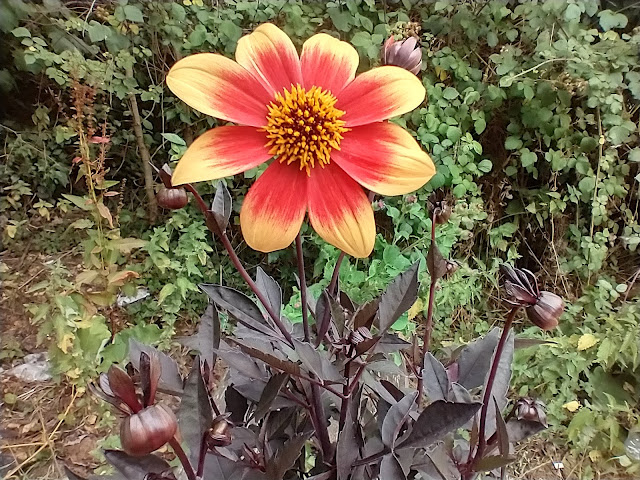Garden Bloggers' Blooms Day: The Fibonacci effect
I bought this Camassia leichtlinii 'Sacajawea' five years ago at the Malvern Spring Show. How do I know that? It's because so far, the number of blooms I've had each year has followed the Fibonacci sequence i.e. 0 (when I didn't have it), 1 in year 1 when I bought it, then 1 in year 2, 2 in year 3, 3 in year 4, and as you can see 5 blooms this year. So what should I get in year 6? The answer is 8 (i.e. 3+5 from the 2 previous years), so we shall see...
I've often seen the more common blue Camassias in lots of gardens I've visited in late spring, and very fine they are too...but plumped instead for its white cousin with variegated leaves for the top terrace bed here at VP Gardens. It's fully repaid my decision despite the slow increase in blooms as the leaves lengthen the season of interest and the rocket-like flowers really light up this part of the garden towards dusk.
The garden's flowering much later this year, owing to one of the coolest and wettest Mays on record. It's resulted in a two-week delay for most flowers which in turn has timed these blooms delightfully to show off in June's Blooms Day. They also deserve a closer look!
Garden Bloggers' Blooms Day is hosted by Carol at May Dreams Gardens.












Beautiful!
ReplyDeleteHappy Garden Bloggers Bloom Day!
Thanks Lea!
DeleteI'm not familiar with that plant but what lovely blooms. Happy Bloom Day.
ReplyDeleteThanks Dorothy
DeleteVery striking flowers.
ReplyDeleteThey are indeed Lisa :)
DeleteI love Camassias but, regrettably, it's one of the many plants that refuses to grow in my climate.
ReplyDeleteThat's a shame Kris :(
DeleteDaisies with their ray florets also follow Fibonacci - 3 and 5, but not 4 ...
ReplyDeleteThat's right Diana, as do sunflowers which is the most common botanical illustration of the effect I've found :)
DeleteAll getting very mathematical here but rather fine - my new garden in Pembs is very small and full little but summer bedding - and yet I rather like it's gaudy effect , at least for now.
ReplyDeleteSounds very 70s Mark! Also sounds perfect for your garden's location
DeleteI have both a blue and a white cammassia which I planted two years ago. I really love them, the white one flowers a bit later than the blue one. I didn't count the flowers.
ReplyDeleteThat's interesting re bloom timing Margaret. I'm thinking about using the blue ones in the front garden, but I also expect the northerly aspect will affect their bloom time too. Perhaps mine will bloom at the same time? We shall see...
DeleteI wouldn't have noticed the effect on this particular flower. I have purple ones, will have to check tomorrow.
ReplyDeleteHi Robin, I'm applying the sequence here around how the number of blooms has increased each year rather than the bloom itself
Delete